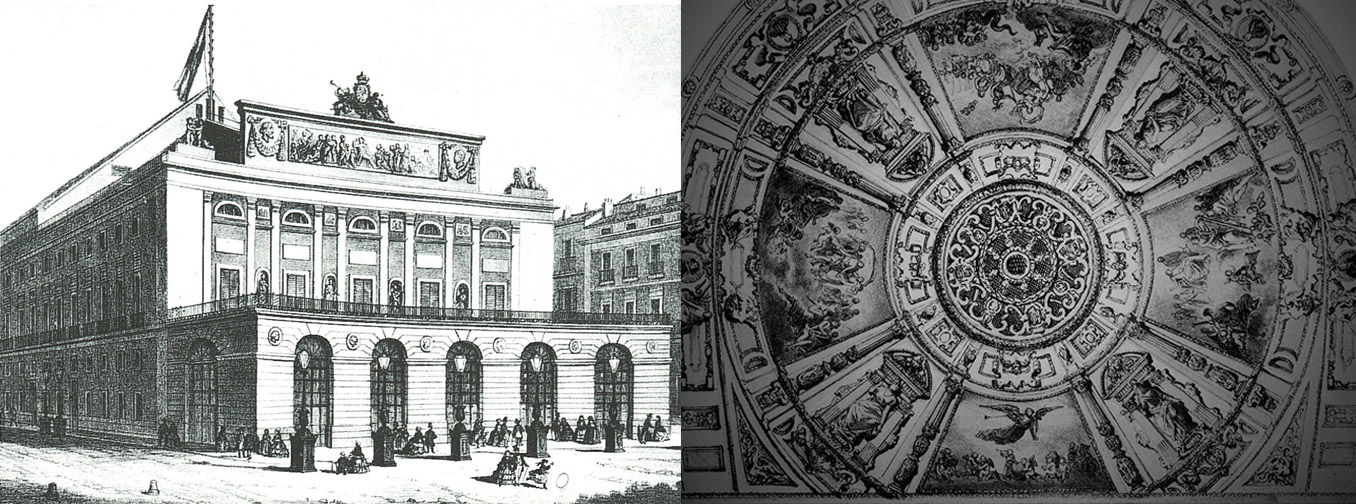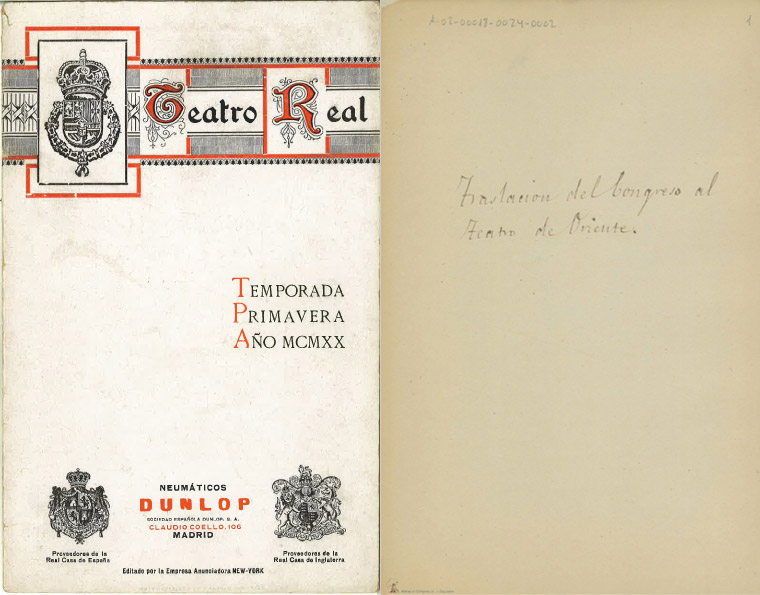Consolidation as a leading theatre (1997-Present)
Since it reopened as an opera house in 1997, the Teatro Real has firmly and consistently moved towards artistic excellence and institutional innovation, becoming one of the leading cultural beacons in Europe and the principal opera house in Spain. This consolidation has been marked by effective management, an ambitious international profile and an unbending commitment to contemporary creativity, accessibility and sustainability.
World premieres
Since it reopened in 1997, the Real has hosted 16 opera world premieres: Don Quijote, by Cristóbal Halffter (2000); La señorita Cristina, by Luis de Pablo (2001); Dulcinea, by Mauricio Sotelo (2006); El viaje a Simorgh, by José María Sánchez Verdú (2007); Faust-Bal, by Leonardo Balada (2009); La página en blanco, by Pilar Jurado (2011); Poppea e Nerone, by Monteverdi-Boesmans (2012); The Perfect American, by Philip Glass (2013); Brokeback Mountain, by Charles Wuorinen (2014); El Público, by Mauricio Sotelo (2015); La ciudad de las mentiras, by Elena Mendoza (2017); El pintor, by Juan José Colomer (2018); Je suis narcissiste, by Raquel García-Tomás (2019); Marie, by Germán Alonso (2020); Tránsito, by Jesús Torres (2021), El abrecartas, by Luis de Pablo (2022); Extinción, by Agrupación Señor Serrano (2022); La regenta (2023), by María Luisa Manchado; and Tejas verdes (2025), by Jesús Torres.
Institutional stability
A decisive moment in the development of the Teatro Real was the appointment of Gregorio Marañón as chair of the board in 2007. This marked the consolidation of a model of stable, autonomous governance in line with the standards of Spain’s great cultural institutions. Coinciding with the start of the economic crisis and under the initiative of the Ministry of Culture, a new operating system was established, granting the Teatro Real greater management independence. Among the principal measures was the appointment of a chair of the board proposed by the Minister of Culture and chosen from its independent members, with renewable five-year periods in office. Since then, the Teatro Real has undergone a sustained, far-reaching transformation that has had a positive impact in all areas of its activity, from the artistic excellence of its programme to its promotion of educational, social, technological and international projection projects.
International coproductions and artistic prestige
Another key element of its consolidation has been the active policy of coproductions with the principal opera houses of the world, such as the Royal Opera House in London, the Opéra National in Paris, the Staatsoper in Berlin, the Teatro alla Scala in Milan, the Metropolitan Opera in New York and the Liceu in Barcelona. These alliances have made it possible to share large-format productions and consolidate the Real’s prestige as a reliable, creative coproducer.
Cultural diversification and cross-disciplinary projects
Beyond its opera programme, over the last few years the Teatro Real has developed an ambitious strategy of cultural diversification and attraction of new audiences. One example is the Flamenco Real cycle, begun in 2018, which has brought some of the most important figures in flamenco to the Madrid theatre.
Along similar lines, the Teatro Real offers a regular programme of chamber concerts, symphonic music, dance, and vocal recitals, including cycles like Chamber Sundays and Voices from the Real. The commitment to education and critical thought also occupies a central place. Initiatives like University Onstage, Opera Uncovered and Understanding... seek to bring a young and adult audience closer to artistic creativity in terms of education, reflection and participation.
Among the most unusual projects is the Real Carriage, a mobile stage structure travelling around squares, districts and municipalities all over Spain taking micro-operas and recitals on to the street. This approach makes it possible to democratise access to opera, talking it away from the big stages and promoting public participation all over Spain.
Digitisation and innovation: My Opera Player
In 2019, the Teatro Real launched the My Opera Player digital platform, a pioneering service for streaming opera, dance and concerts. This makes it possible to extend the theatre’s scope beyond its walls. During the COVID-19 pandemic, this tool was crucial for maintaining cultural activity and connecting with spectators all over the world, strengthening the theatre’s international dimension. The platform has become established as a global window on Spanish opera production.
Recognition and awards
The Teatro Real’s prestige has been backed by many international awards and distinctions. In 2021, it was recognised as the Best Opera Company in the world at the International Opera Awards.
Real Teatro de Retiro: a venue for new generations
In 2022, the Teatro Real took another step towards educating new audiences with the opening of the Real Teatro de Retiro, a stable theatrical venue devoted entirely to audiences of young people and children. This new theatre makes it possible to schedule adapted operas, family shows, interdisciplinary entertainments and participatory workshops.
Commitment to sustainability: solar panel roof
The Teatro Real confirmed its commitment to sustainability by installing a high-efficiency solar panel roof architecturally integrated into the historic building. This notable reduces the theatre’s energy consumption, making it one of the first heritage theatres to follow a self-generated energy model. The project forms part of an integrated policy of energy efficiency, waste reduction, improved accessibility and respect for the heritage environment.






